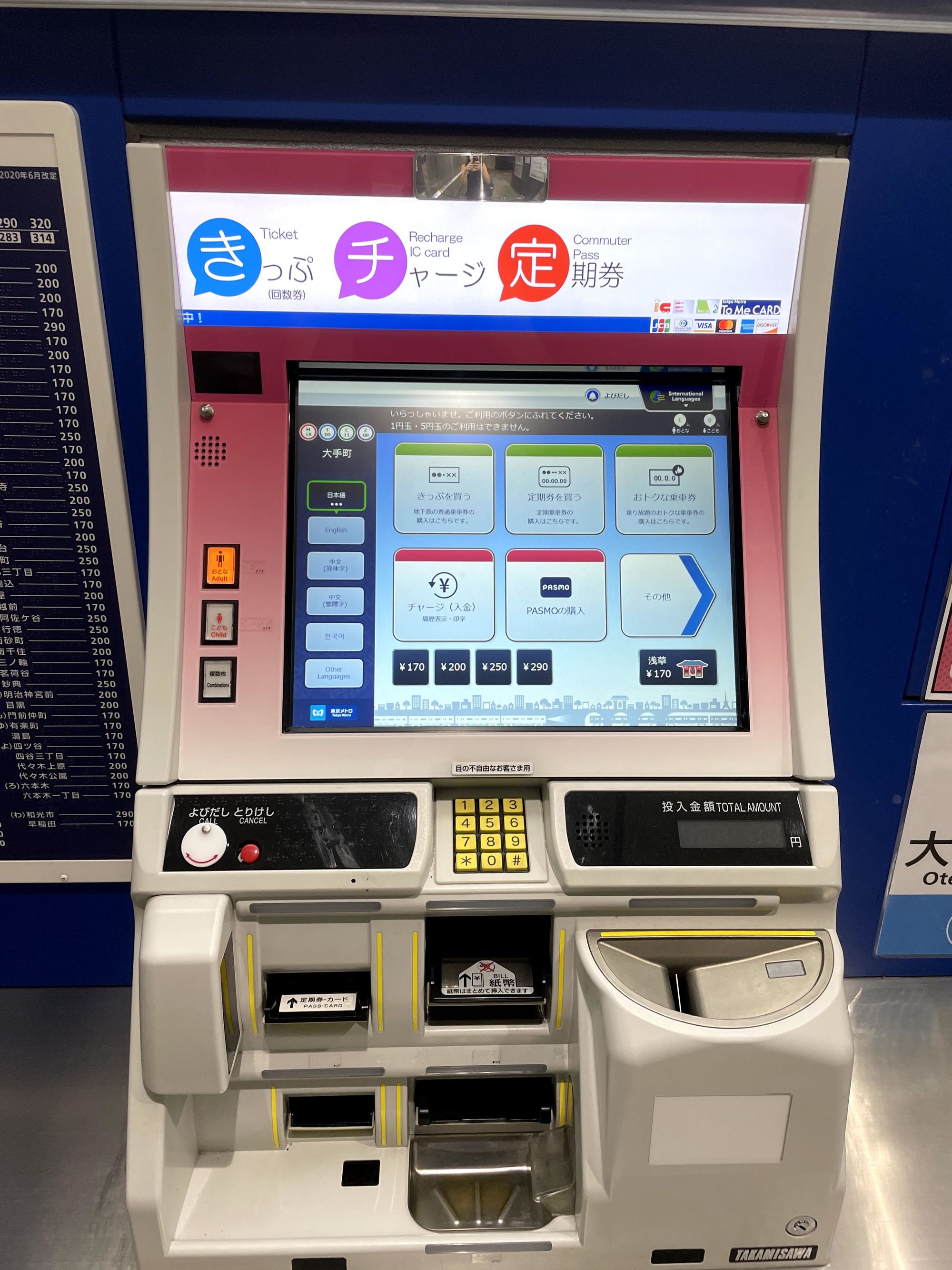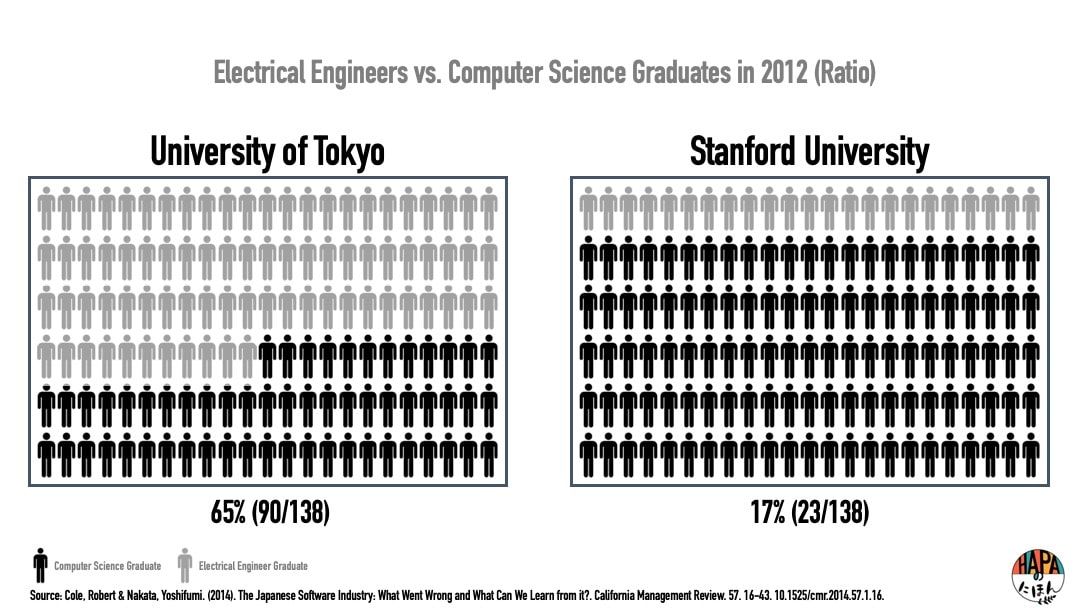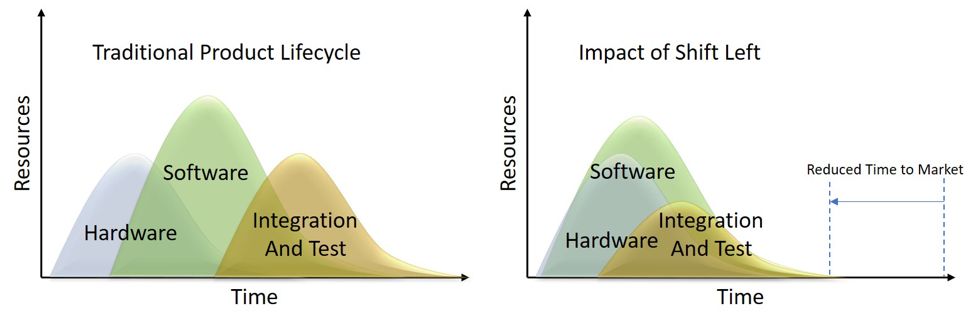Why Japan is no longer a competitive in the tech industry
A Japan was the country known for technology…30 some years ago. Today, Japan’s technology sector continues to fall behind, even after the economic collapse in the 1990s. Why is that?

The other day, someone asked me what was it like living in Tokyo. “Is it filled with high tech? Robots everywhere?” I was taken by surprise. My whole life Japan has been the same. From the time I went to elementary to school in the early 2000s, to my life working as an “adult” in 2021 – life here has not changed much. I responded with a quote someone once said to me,
In the 1970s Japan was already in the 1990s. But now in the 2020s, Japan is still in the 1990s
So no, Japan is not as high tech as you think it may be. To this day, Japan’s reputation as the high tech and advanced country is still held by many. However, they are unaware of how drastically Japan has fallen in the competitiveness of its tech industry.
Japan once dominated the tech industry, there is no doubt about it. If I asked you now, to name three Japanese technological inventions, what would you say? The bullet train, the Walkman, the Nintendo GameBoy? I bet you, they are all hardware based. Can you name some famous Japanese software (aside from gaming)?
As the world shifted to its focus to software from hardware Japan was left behind
In my opinion, the main reason why Japan’s tech sector continues to lag behind is due to its lack of focus and appreciation of new development in software. From a historical standpoint, it make sense as to how Japan ended up with this mindset. It was hardware (manufacturing based, of course there is software in these products) that lifted them from the ruins of WWII* and drove Japan’s economy to its peak in the 1980s and 1990s (before the bubble crashed.)
*Obviously, it wasn’t just success in manufacturing, there were many other factors, such as support from the US, favorable exchange rates, government support, etc. but without strong manufacturing and tech, Japan’s economy would not be where it was and Japan would not have the reputation that it had.
**It should be mentioned that Japan still dominates in certain technology sectors such as gaming, but as a whole is behind.
The “new” product lifestyle
Before jumping into why Japan is behind, let’s first get a high-level understanding of the product life cycle evolution of tech products.
This is a graph that explains the traditional vs new product lifecycle of tech goods. As we can see, traditionally, hardware was developed before the software. Now, these two must be developed in tandem to stay competitive. Furthermore, the time to market has decreased.
Nowadays, to stay competitive, firms need to develop products in the timeline on the right. Keep this graph in mind.
Software is simply underappreciated
Just like an old-mind that doesn’t change with the times, Japan continued to do what it did – focus on the hardware, then the software. As they say, if you are unwilling to change, you cannot grow and will be left behind. The decision making process, education system, and investments provide evidence for the lack of appreciation for software.
Software engineers are low on the totem pole – even in tech companies
Software engineers, compared with other hardware engineers (like electrical), are simply seen as less prestigious or valuable.
“We did not bring software engineers into product development at the beginning. The hardware engineers would begin the product and then software would come in after the fact. And that’s because in a company that has jobs for life, the older people are at the top and the younger software engineers are on the bottom, pushing up. So there is a kind of a generation gap.”— Howard Stringer, former President of Sony in 2006 interview.
Unfortunately, the situation from the quote above is not unique to Sony. When hardware capabilities were key to the companies’ success (back in the 70s and 80s), the hardware engineers were the ones that rose to the top. Japanese businesses tend to be more hierarchical in nature, so when software started to gain more importance, the software engineers’ voices were not heard or valued less (as the leaders and executives tended to have hardware engineering backgrounds and perspectives.)
Still to this day, friends and people internet forums (like Quora and Reddit) who are on the software side provide anecdotal evidence that the wages are generally lower, and their degree and career is not seen as prestigious as their hardware counterparts. In a question about wages for computer scientists in Japan, the response on how computer scientists wages in Japan were low.
"…the main reason why engineers (programmers) aren’t that well paid as in Western Europe or in the US. Japanese companies still have to grasp the importance of expertise, although they are slowly finding themsleves in need of such experts, therefore the need to differentiate in payment."
– Luana Matei, on Quora
Without going on a tangent, Japan’s software engineers are paid far less than their US counterparts. Yes, wages in the US are significantly higher than most other countries (fueling the income inequality problem, but that’s for another time), but even compared to Germany or the UK, they are still less. So if you are top tier talent, why wouldn’t you go to a different country (like the US), and make 2-3x more while working at a world-class firm with cutting edge technology?
Japanese firms chose to compete on operational effectiveness – not innovation
Further evidence to prove Japanese companies lack of appreciation for software is their investments. The two graphs below show the difference in software investments between Japan and the US (while Japan is based on 2000 data, researchers cite that experts believe this breakdown did not change much within the following 10 years.)

Let’s focus on the “customized” software. As the name says, the software is customized to meet the firm’s needs, in general this requires more investment and time since it is specially modified and designed.
There are a few counter arguments in favor of Japanese firms spending on software. Some say that software engineers are paid less in Japan and therefore development costs are less. In addition, many Japanese firms lowered their IT costs by outsourcing their IT capabilities to subsidiaries. Lastly, there is evidence that the life of Japanese business applications are much longer than their US counterparts (so over time less investment is needed since the software lasts longer.) Thus, it is okay that the portion spent on customized in house software is low.
However, researchers at UC Berkley provide strong evidence that the counterarguments, are in fact, not counterarguments at all. Rather, the counterarguments demonstrate how Japanese companies decided to “compete in IT on operational effectiveness (cost, productivity, and quality) and not to seek new revenue growth through innovation.” What is needed for innovation? Investment.

Train ticket machine in Tokyo. With buttons
The Japanese firms’ strategy is ideal for slow-evolving technologies, such as hardware, but in the age of fast-paced software, well, it just doesn’t work well.
Firms are not the only entity that lack appreciation for software. Japan’s universities also fail to understand this as well.
Japanese Universities also undervalue software
To be begin with, Japanese universities were slow to adapt the newest computer science curricula, and were about 6 years behind the U.S. according to Cole, Robert & Nakata, Yoshifumi (2014).
On top of this, there was a lack of competent faculty to teach computer science. Many were IT Executives, that while knew about tech, were not competent enough to teach state-of the art software, and lacked capabilities to further scientific research in the field.
In addition, in 2012, the University of Tokyo (the “Harvard” of Japan, if you will), had a quota* of 150 electrical engineers, while the Information and Communications Technology (which is software) had a quota of only 80. On the other hand, Stanford, had a graduating class in Electrical Engineering of about 50 and Computer Science (software) 250. Stanford was graduating 5 times the amount of computer science majors as University of Tokyo.
*Until 2006, the Ministry of Education in Japan prescribed the student quota, but since then, it has been the responsibility of the schools

For those who bring up the point, “these are only two universities.” Good point, as further evidence, the number of computer science graduates in the U.S was about 63,000 in 2009. In Japan, it was about 16,300, about a quarter of the US’s. Yes there are more people in the US, even so Japan had about 43% of the labor force of the US’s during that time. This means, Japan would need about 27,000 to be roughly equivalent to the US – a gap of almost 11,000 students. Japan would need 66% more students than it was already graduating to meet this.
Simply put, Japan’s universities’ focus is misplaced.
Japan is slow to adapt and accept new ideas – especially from young people
Remember that graph at the way beginning about the product lifecycle? How not only is hardware and software being developed at the same time, but the time to market also decreased? Well, to make matters worse Japan struggles with speed as well.
Let’s just say Japan is on par with the US in terms of valuing software. Even in this situation, Japan would still be behind in developing software. This is due to the nature of Japanese culture.
Japanese people are extremely risk-averse. Without going down the rabbit hole, basically, to balance uncertainty, Japanese people have rules, just to have rules. Because when you have rules, there is always a procedure. Which means someone will know what to do. Japanese people like to know what to expect.
For example, if a large Japanese firm, let’s say Hitachi (sorry Hitachi), has a new-grad who just joined the company and invents some new software. It is fairly likely that Hitachi will not implement this new software. They are far more likely to choose the well-established electronics company to outsource software OR someone who is much more tenured with a strong reputation than the new grad, despite the fact the software may be far inferior/OR/no matter how superior the new software may be. This is also true in the scenario where a startup company proposes new software to Hitachi as well.
Not only are Japanese people highly risk averse (Hofestede 6 Dimensions of Culture), but Japanese companies are simply not that agile. This likely stems from the incremental, continuous-improvement philosophy (kaizen) introduced by Toyota. Since then, it is a common standard for other companies. With influence of risk-averseness, Japanese firms stress detailed planning prior to execution. Adopting new technologies and developing innovative products quickly simply does not work with this type of culture when you need to plan out each step meticulously.
How does Japan’s future look?
Obviously, predicting the future is quite difficult. The government statistics office does show a gradual increase in number of software engineers for a couple years before declining, but according to a Mizuho bank report in 2018 says that even with this increase there will still be a lack/deficit of engineers. I tend to be wary/skeptical of such predictions as most predictions are inaccurate even by experts. But considering the current state of Japan’s IT industry and the shrinking population, that sounds about right. So when I see forecasts like this, I tend to trust the trend and key takeaway rather than the details and actual numbers.

Recent investments and establishments of software engineering and computer science specialty schools
There seems some hope for the tech sector. Japan cannot bridge this gap with immigrants alone. But there seems to be an increase in software engineering specialty schools. 42, an innovative software engineering college founded in Paris, opened up a campus in Tokyo. Founded in Paris in 2013, with over 35 locations (campuses) in the world, 42 opened their Tokyo campus in 2020. With Japan’s population of ~125 million, there most certainty is demand for such school, but if there was truly no hope for Japan’s tech sector, I do not think 42 would have opened a campus.
This does not say too much, but it is an encouraging sign.
Other factors
In addition to the lack of appreciation of software, there are other key factors, not explored in this article that seem to be significant contributors. Of which include…
• The lack of entrepreneurship and startup culture
• Change in company culture. Apparently, large Japanese tech companies, used to be more innovative and nimble. (A bit dated, but an interesting article on Sony https://kotaku.com/how-sony-is-turning-into-a-ghost-in-japan-and-around-th-5960411)
Final Thoughts
There was once a time when the US feared being taken over by Japan. If you, like me, did not grow up during that time, it seems almost preposterous.
To see Japan, who was once on the cutting edge of technology continue to fall behind, is heartbreaking. It’s kind of like growing up and realizing that your parents are not superheroes, but rather just normal people (Sorry mom and dad.) The most painful part is this country, filled with brilliant minds, is unable to achieve its potential due to old thinking, old-fashioned cultural norms.
What do you think of Japan’s tech sector? Does it still have hope? What needs to be changed? If you are aware of other major factors not listed here, please let me know. I would love to hear!
Citation:
Cole, Robert & Nakata, Yoshifumi. (2014). The Japanese Software Industry: What Went Wrong and What Can We Learn from it?. California Management Review. 57. 16-43. 10.1525/cmr.2014.57.1.16.


